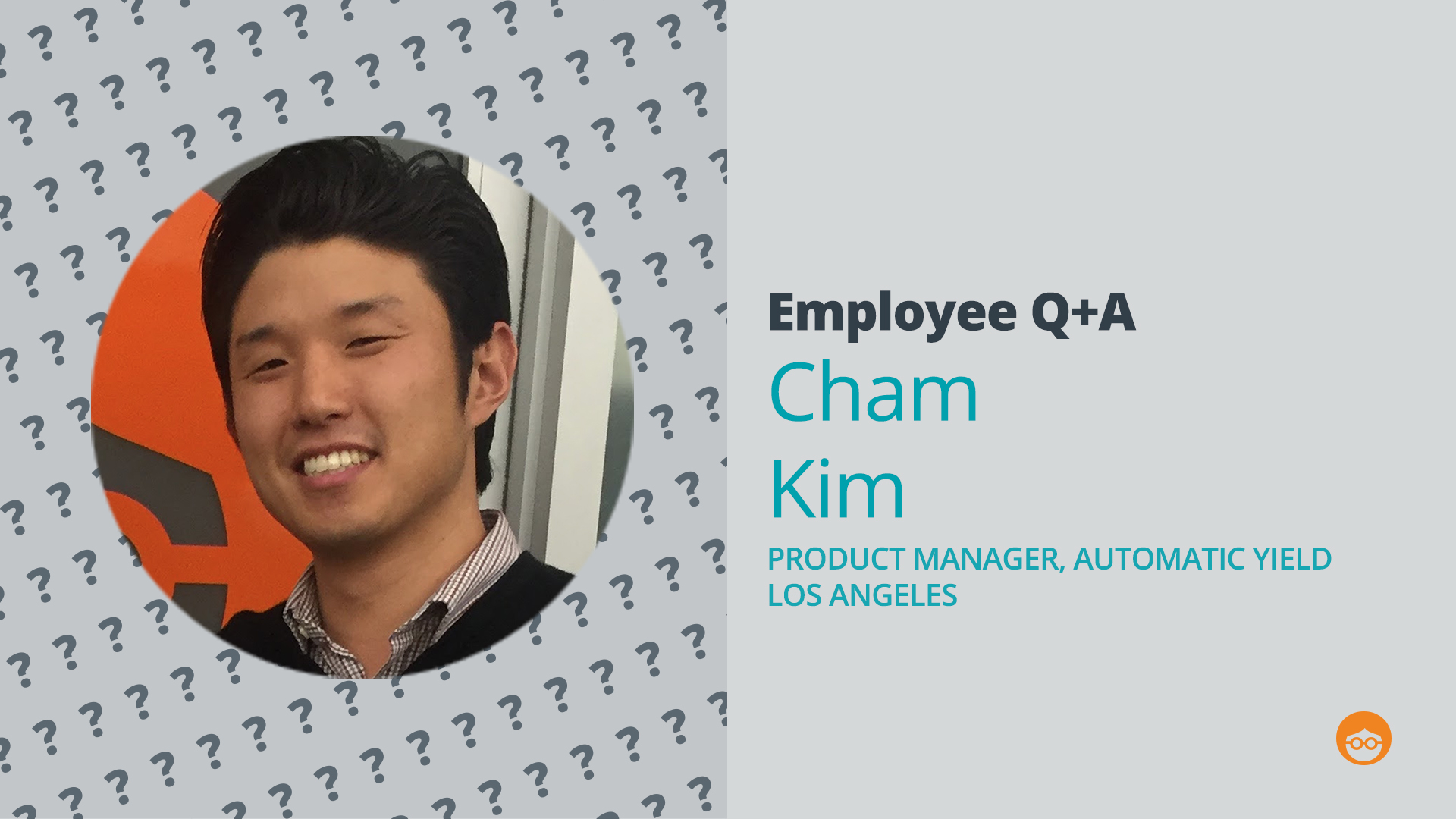Inside Outbrain: Meet Cham Kim, Product Manager, Automatic Yield
 Welcome to Inside Outbrain, our blog series that introduces you to some of Outbrain’s employees and their day-to-day. Today we’re talking to Cham Kim, Product Manager, Automatic Yield, Los Angeles. Cham has been hard at work on Outbrain’s new product, Automatic Yield, which helps publishers finally connect the dots to see the real-time revenue for each piece of their editorial content. We spoke to Cham about his role, what excites him most about Automatic Yield, and the biggest opportunities he sees for publishers right now.
Welcome to Inside Outbrain, our blog series that introduces you to some of Outbrain’s employees and their day-to-day. Today we’re talking to Cham Kim, Product Manager, Automatic Yield, Los Angeles. Cham has been hard at work on Outbrain’s new product, Automatic Yield, which helps publishers finally connect the dots to see the real-time revenue for each piece of their editorial content. We spoke to Cham about his role, what excites him most about Automatic Yield, and the biggest opportunities he sees for publishers right now.
OB: Can you tell me a little about yourself and how you ended up at Outbrain?
CK: My background is in the ad tech industry, where I’ve primarily worked with publishers for the past 12 years. Most recently, I worked at Penske Media Corporation for about six years. While at Penske, my colleague Nic Paul and I saw a need in the marketplace for analytics that could tie content to revenue. So we formed Revee—a dashboard for publishers. Nic headed up sales and I was in charge of operations and programmatic management, with responsibility for growing revenue for the sites. In 2015, Revee was acquired by Outbrain.
OB: What is your role in Outbrain Automatic Yield?
CK: I’m the product lead for OB’s Automatic Yield (what we previously called Revee). Outbrain Automatic Yield integrates Revee’s technology to provide a dashboard view of which articles are earning the most money. In essence, it marries personalization algorithms with a real-time understanding of how revenue is being delivered.
When we were running Revee, we faced a lot of questions about the best way to automate all this data. We concluded that it was a perfect fit with Outbrain because of the existing distribution channels. So our first steps were figuring out how Revee’s analytics technology would work with Outbrain’s content discovery platform. That required meetings with sales, engineering, and other teams to establish the priorities.
Now we are working on automated traffic shaping based on revenue. We are enhancing our dashboards, including a Total Value Report (TVR) with a lot of cool features for publishers’ different business units, such as audience development, advertising operations, product, C-level, etc. And we are currently in the process of rolling out several new modules.
OB: How do you go about testing and improving Automatic Yield?
CK: We originally launched a beta version of Automatic Yield with a couple of publishers, and in return received some actionable feedback for modifications. We continue to get feedback on an ongoing basis from our current publishers. In the future, in addition to constantly speaking with our publishers, we plan to set up Intercom messaging within TVR to make it easier for publishers to provide feedback.
OB: What are publishers most excited about in regards to Automatic Yield?
CK: They now have access to all this data that no one had before. In the past, publishers would pull from numerous reporting sources, but now with AY, this is in real time and super easy to integrate. As we continue to roll out new modules and features, we are receiving lots of positive feedback. For instance, publishers are able to see the breakout for all their partners tied back to revenue.
OB: What pain points does this product solve for publishers?
CK: It solves the problem of tying revenue to content, which is a big differentiator for us. Other companies (Stack, Domo) pull together revenue sources for partners but all they are doing is creating a dashboard on a per impression basis—they don’t tie revenue to content. We are the only company to offer that.
OB: How does Automatic Yield solve some of the pain points you experienced first-hand when working on the publisher side?
CK: Overall, in the very segmented publishing world, the biggest improvement is the holistic dashboard, which lets everyone see what’s happening across the board. Automatic Yield also provides real-time information, which is critical to assisting ad ops teams, helping them to discover campaigns that are under-delivering. It also helps programmatic teams figure out their best-performing partners and assists audience development teams in figuring out where to acquire traffic in an ROI-positive manner.
OB: What do think are some of the biggest opportunities for publishers right now?
CK: Publishers tell us that their biggest opportunity is revenue generation. They are always trying to get as much revenue off of their sites. Automatic Yield can see all of that data and show how much money they can make by pulling all data in for the publisher—and even new companies as they come on board.
Header bidding is also gaining more attention. It gives third-party partners real-time options before the page actually loads—using code, the page runs auctions and whoever wins the inventory based on the bids, gets to serve their ads. Each partner has its own advertising ecosystem (supply side and advertising side) and each advertiser has to target features (demo, retargeting, specific segments) and specific payments—combined, those will trigger a bid. It ultimately creates more competition (beyond Google) with higher RPMs.
Automatic Yield makes it easy for a publisher to visualize this all at once. The reporting features within TVR offer so many different ways to slice and dice the data for not only header bidder partners but any other monetization partner type (sponsorships, standard campaigns, Adx, and traditional remnant set ups).
OB: What’s the greatest new thing you have discovered—anywhere?
CK: I just had a baby 11 months ago—so that’s been interesting. I’ve discovered that I don’t need much sleep to get things done


